Frederick Richard Pickersgill was a famous painter and book illustrator of the Victorian era in English art and literature.
Table of Contents
The Early Life of Frederick
Frederick Richard Pickersgill was born on 25th September 1820 into a family of artists. He was the son of was the son of Richard Pickersgill, a contemporary artist.
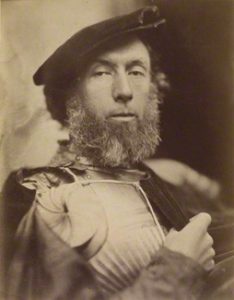
Frederick’s first teacher was the famous English painter and academic W.F. Witherington who also happened to be Frederick’s maternal uncle.
Major Achievements of Frederick as a Painter
In the year 1840, Frederick was admitted to the Royal Academy Schools for higher education. In 1843, Frederick won a major prize for a drawing the death of King Lear which eventually got him an entry for the paintings for the new houses of Parliament.

A painting of Frederick’s, “The burial of Harold” was accepted for the decoration purposes of the Parliament in 1847. At the mere age of 27, Pickersgill was elected as an associate member of the Royal Academy and also became a full-time member of the Institution.
Frederick Richard Pickersgill Career
Between the years 1839 and 1875, Frederick exhibited over fifty paintings at the Annual Royal Academy exhibits. Most of these works by Frederick was drawn from the subjects portrayed by Shakespeare, Milton, and Spenser in their respective works.
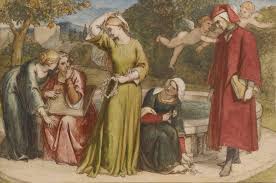
Later in his career, Pickersgill’s ideas and interests were broadened under the influence of the Pre Raphaelites which led to the inclusion of certain finely executed scenes from nature.
Major Achievements of Frederick as an Illustrator
While Pickersgill’s activities as a painter in historical style are quite common, his activities as an Illustrator is mostly undermined. His book designs are briefly discussed by Goldman (1996, 2004, pp. 211–13) and Reid (1928, pp. 248–51) and he also listed in most of the reference books on Victorian Illustration.
Yet his printed work has never been the subject of sustainable investigation. Born in 1820, Pickersgill’s professional life spanned numerous change in graphic style.
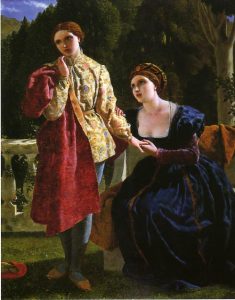
While in the twenties the comic grotesque of Cruikshank was the dominant idiom, which in the fifties and sixties was taken over by the poetic naturalism of Millais, Pinwell, and Sandys.
Pickersgill was alive in the 1890s when the Art Nouveau and Beardsley and Ricketts was in fashion. Pickersgill did not engage with any of these even if his illustrations appeared to be in conjunction with the artists of the sixties.
Frederick Richard Pickersgill’s Books
Pickersgill’s book-images can be understood as a combination of numerous overlapping and converging tendencies. One of the influences was the pictorial idiom which he deployed and like many other painters and illustrators of that time, Pickersgill customarily transmitted the visual image of the fine art to the small frame of the printed page.
The compositional tools that characterize his works in oil and watercolor are skilfully used in black and white and Pickersgill’s illustrations can be read as paintings in print.
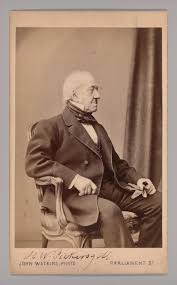
Another source of influence was the ‘outline-style’, which was figured in two varieties: The English version, created by Flaxman in imitation of Attic vase painting; and the ‘Germanic’ outlines by Retzsch, which took the form of a series of literary picture-books. Pickersgill was influenced by these two artists from the 1830s and 1840s.
Frederick Richard Pickersgill Biography
Often delineated as a ‘Germanic artist’ and always as a classicist, Pickersgill assimilated the lessons of Schnorr, Rethel, and Retzsch as well as the frieze-like design of Flaxman; like many of his period,
He produced an illustrative style which is hybrid which resembles the cultural exchange between England and Germany during Queen Victoria’s reign. Pickersgill’s illustrations and graphic designs are generally pitched at the same height mostly in the service of Bible, history and epic verse.
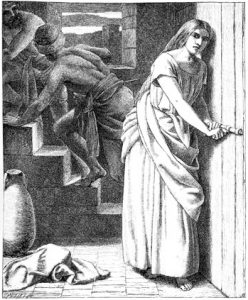
He formed a close professional relationship with the Dalziels, producing memorable work in the form of the rare Six Compositions from the Life of Christ(1850) and in the monumental Bible Gallery of 1880 (dated 1881).
His different designs, this time for literature, appeared in Willmott’s Poets of the Nineteenth Century (1857), the same editor’s English Sacred Poetry (1862), and in other books of verse such as Montgomery’s Poems (1860) and Moore’s Lalla Rookh (1860).
Frederick’s Legacy
Pickersgill took his last breath on 20th December 1900 at Yarmouth. At the time of his death, Pickersgill was 79 years old.
More Info On- George Meredith, Lord Byron, William Lamb, Mary Shelley
